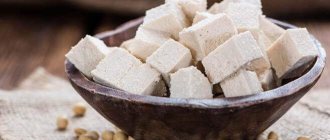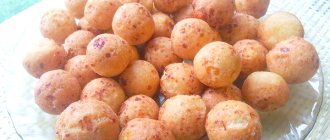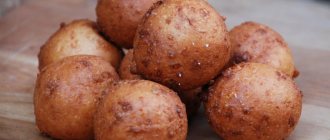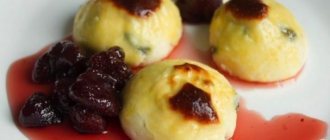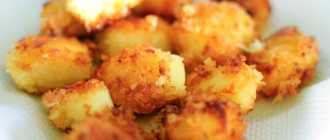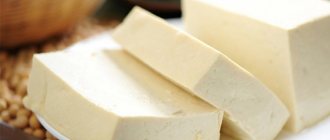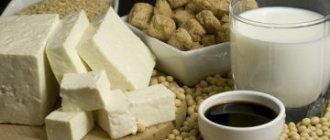Sweets from Japanese cuisine have a unique taste, but are made only from natural ingredients by hand, which means they can safely be called healthy. The Japanese, like Russians and other peoples, have the most popular desserts. These include mochi, a flatbread made from sticky rice paste. However, this Japanese sweet can have another form. A dango recipe is based on mochi. Options for preparing this delicious dessert are presented in our article.
What is dango?
This dessert can easily be called a favorite treat for children. Japanese dango sweets look so appetizing that no tourist can resist the temptation to try them. As mentioned above, this dessert is based on mochi cakes. But the question of what dango is remains open. But just look at the photo.
Dango is mochi balls skewered on a wooden stick and usually topped with a sweet sauce. This dessert is characterized by a wide range of colors and a variety of tastes, which is achieved by using different sauces. In Japan, every housewife knows how to cook dango. However, his technology is not complicated, and anyone can master it.
Varieties of dango and ingredients for it
Since this Japanese sweet is based on mochi, the main component of these two desserts will be identical. This is rice flour. But you can achieve differences in the tastes, aromas and shades of the balls by adding additional ingredients to the dish:
- green tea;
- Red beans;
- regular and black sesame;
- sugar;
- starch;
- soy sauce.
Japanese dango has several varieties:
- An-dango is a dessert made from mochi balls prepared with red bean paste - anti.
- Goma dango is a sweet that is always sprinkled with sesame seeds.
- Kinako is a dessert made with soy flour.
- Mitarashi is one of the most popular types of sweets in Japan. The dessert is mochi, topped with a syrup made from soy sauce, sugar and starch.
- Hanami dango are rice flour balls of different colors placed on a wooden stick.
- Chadango is a dessert flavored with green tea and sprinkled with green tea leaves.
- Tsukimi is a dango prepared to celebrate the moon viewing holiday.
It is recommended to choose and try each of the presented options.
What kind of dish is this
Oriental cuisine is a source of pleasure and a source of thought. One of the most mysterious for Europeans is Japan, which has given the world a variety of dishes and delicacies that amaze with their original design and taste.
Dango is a sweet that is a favorite dessert for most Japanese people. It did not leave gourmets around the world indifferent, so housewives and simply connoisseurs of haute cuisine are eager to learn the recipe.
Dango is one of the sweet dessert dishes called Mochiko. This treat is a classic for housewives in Japan; it is of a ritual nature, since it is served at the festive table on the day of admiring the moon (Tsukimi).
The dish is prepared from rice flour and consists of small balls. It takes no more than half an hour to prepare them, since there is no need to put any special fillings or additives into the balls.
The secret of the unusual taste is the variety of sauces, with which you can create several dozen variations of this exotic element of Japanese cuisine.
They help achieve diversity in colors, which will successfully emphasize the uniqueness of traditions and beliefs that exist in the country.
Photo: colorful dangos
These Japanese colorful rice balls attract attention and make you learn to reproduce the recipe in many countries.
Mitarashi dango: rice flour recipe
Almost every major supermarket has a section offering customers the ingredients needed to prepare Japanese dishes. However, it will be enough to purchase only rice flour, special vinegar and soy sauce. All other ingredients are so familiar that they can be easily found in any kitchen.
We will describe how to cook dango in the following step-by-step instructions:
- Pour rice flour (300 g) into a deep bowl. Make a well in the center and pour 250 ml of hot water into it. Knead the dough, shape it into a sausage and cut it into 25 pieces. Use your hands to shape them into balls.
- Boil 2 liters of water in a large saucepan on the stove. After boiling, add sugar (2 tablespoons).
- Place the prepared balls into boiling water. Cook the mochi for 5 minutes.
- At this time, prepare a deep bowl of ice water. Using a slotted spoon, transfer the mochi from boiling water to cold water. Thanks to the temperature difference, the balls will become elastic and keep their shape well.
- The finished balls are strung on wooden sticks and fried in a grill pan until characteristic stripes appear. If desired, you can skip this cooking step.
- Pour the sauce over the finished dessert. To prepare it, pour 100 ml of water into a saucepan, add a teaspoon of starch, 50 g of sugar, 25 g of soy sauce and rice vinegar (½ teaspoon). Cook the sauce over low heat until it becomes thick.
Original version
For a long time, the Japanese considered the national dessert a means of cleansing the body and spirit of a person. They perceived it as a kind of offering to the gods. For this purpose, a variety of variations of Dango were used. A recipe with a photo will help you better understand the technique of preparing this dish. One of the methods involves the availability of the following products:
150 grams of rice, 75 milliliters of warm boiled water, a pinch of salt, 30 grams of sugar, ½ teaspoon each of sesame seeds, poppy seeds and cinnamon.
Sequence of work:
- First, you need to turn the rice into flour using a coffee grinder. It is better to prepare the dough from a mixture of regular grains and sushi rice.
- Place the dry ingredients (sugar, flour and salt) into a deep bowl.
- Gradually adding water, knead a plastic dough and knead it thoroughly.
- Divide the mixture into balls.
- Place them on a steamer rack and cook for 25 minutes.
- Add the finished products together and turn them into a single mass again.
- Make round pieces from the resulting dough again.
- Roll them in a mixture of sugar with sesame seeds, cinnamon or poppy seeds.
- After this, the semi-finished products need to be pierced into skewers one, three or four at a time and poured with syrup.
Alternatively, the balls can simply be placed in a bowl or carefully distributed on a plate.
Recipe for colorful hanami dango
This interesting dessert is prepared using rice flour and tofu soy cheese. This product is known for its high protein content, while having a neutral taste. Multi-colored dangos prepared according to the following recipe are bright and tasty. In this case, the sequence of actions will be as follows:
- Knead the dough from tofu cheese (340 g) and rice flour (2 cups). The mass should be smooth and elastic. If necessary, purified water can be added.
- Divide the dough into 3 parts. Add dye or red bean paste to one of them, matcha green tea powder to another, and leave the third as is.
- Form balls with your hands and place them in boiling water with sugar for 5 minutes.
- The balls are strung on a stick and topped with sauce if desired.
A little history
The Japanese have been preparing Dango for over five hundred years. The recipe for the dish has changed many times during this time. Initially, the raw materials for it were nuts. Then grain, previously ground into flour, was used as the main ingredient. Small dumplings were made from it, the size of which should easily fit in the mouth. Later, in the 14th-15th centuries, the blanks began to be strung on small sticks. This made eating dessert more convenient. And the dish looked more original. In the 16th century, a rule was introduced according to which exactly 5 balls had to be put on one skewer. Later, this figure changed several times, and now local stores sell packages of 3 or 4 dumplings per serving. Currently, there are a huge number of varieties of Dango. This mainly depends on the sauce with which this dish is served, or the seasoning used to give it a new taste. Among the most popular options are:
- An-dango are rice balls topped with original red bean paste.
- "Kuri-dango." The aromatic mixture is prepared from chestnut.
- "Goma-dango." The preparations are sprinkled with sesame seeds.
- “Bottyat-dango.” Each “kebab” consists of three balls of different colors. One of them is colored with red beans, another with green tea, and the third with egg.
- "Sasa-dango." This option can have two varieties: male (Otoko) and female (Onna). At the final stage, the balls are certainly wrapped in bamboo leaves.
- Dempun-dango is made from potato flour. After this they are baked with boiled sweet beans.
- Kibi-dango is made from wheat flour.
- "Chadango" is an option when green tea is added to the dough itself.
In each locality, the population prefers to prepare certain varieties of Dango, paying tribute to centuries-old traditions.
Kinako dango made from soy flour
Japanese cuisine is characterized by a large number of dishes that involve hands in the preparation. And we're not just talking about sushi and rolls. Most Japanese desserts are made by hand, and this next option is no exception.
Step by step, kinako dango is prepared in the following sequence:
- Dango powder (1 cup) is added to water that has just boiled on the stove (½ cup), which can be purchased in specialized Japanese stores. The dough is kneaded.
- Balls of equal size (slightly larger than a quail egg) are formed from a pleasant-to-touch mass.
- The prepared balls are boiled in boiling water, and after 5 minutes they are transferred to cold water with ice cubes.
- In a separate bowl, mix sweet soy flour (½ cup), sugar (2 teaspoons) and salt (½ teaspoon).
- From cold water, the balls are transferred to a bowl with a dry mixture, gently mixed and served.
Appetizing "Daifuku"
There is also a recipe with photos for making Dango. At home, this dish can be made in your own way, maintaining only the basic directions of the process technology. For example, the Japanese sometimes make their favorite rice balls by adding different foods inside. It turns out to be a kind of “mochi” with filling. They are usually called "daifuku". To prepare such a dessert you may need: 100 grams of “mochiko” (special rice flour), 120 milliliters of cold water and 3 tablespoons of powdered sugar.
The sweet balls are prepared as follows:
- First, you need to mix the flour with the powder, and then, adding water, prepare the dough.
- Place it on a plate, cover with cling film and microwave at 200 degrees for 5 minutes.
- After this, the dough should be placed on a cutting board sprinkled with starch and rolled out into a pancake.
- Using a glass, cut out even circles from a single layer.
- Place the filling in the middle of each piece. It could even be a piece of chocolate bar or a fresh berry.
- Pinch the edges and then roll everything into a neat ball.
- Place the finished products, lightly sprinkled with starch, on a plate.
Now the balls can be eaten, adding any sauce or sweet syrup if desired.
Goma dango with sesame seeds
We suggest preparing another interesting Japanese dessert. Goma dango, according to a recipe based on rice flour, is prepared in a certain sequence:
- Rice flour (100 g) in a clean bowl is mixed with sugar (1 tablespoon) and a pinch of salt.
- Warm water (50 ml) is poured into the dry mixture in a thin stream.
- The dough is kneaded, from which several small balls are formed. It is recommended to steam them for 20-30 minutes. To do this, you can use a double boiler or multicooker.
- In a separate bowl, combine the sesame seeds fried in a frying pan, a pinch of cinnamon and a teaspoon of sugar.
- Dip the balls in the dry mixture and string them onto sticks. If you wish, you can use regular or black sesame.
Dango Recipe - Japanese Cooking 101
Dango is the generic name for small, ball-shaped mochi dumplings. Typically, the mochi itself is not sweetened, but the fillings and sauces are. Dango is often skewered on bamboo sticks to make it easier (and more fun!) to eat. Dango is a more casual and everyday kind of traditional Japanese sweet (how elegant can that be on skewers?) than some other formal desserts used in the tea ceremony and the like.
Dango can be made from different types of flour, such as Mochiko or Shiratamako, which are made from sweet rice, and Joshinko, which is made from Japanese sticky rice. Since it is easier to find Mochiko (Koda's farm brand) in many grocery stores in the US, we used Mochiko in this recipe. Shiratamako, which can be found in Japanese grocery stores, also works well. We don't recommend using any type of rice flour (other than Joshinko) because we don't know what type of rice is used to make the flour and it may not be gluten-rich enough.
There are many ways to eat these little chewy morsels. Our basic dangos don't have much flavor, so there needs to be something to eat with them. Here we have used sweet red Anko beans instead of dango, the easiest way to eat them. Or you can dip them in Kinako (soy flour) with sugar or Kuromitsu (dark brown sugar syrup). You can grill them and top them with sweet Mitarashi soy sauce. In hot weather, you can place dango balls on shaved ice. In winter, you can eat dango with warm, sweet red bean soup. The sky is the limit!
The ingredients couldn't be simpler: Mochiko and tofu. It's best to use silken (soft) tofu for a smooth texture. Tofu keeps Dango moist and soft longer than just using water. You may need to adjust the amount of tofu depending on what you use because the water content often differs between brands. Dango won't taste like tofu if you don't know what's in it (so you might taste a little soybean since you know it). Once you learn how to make this versatile dango, you'll later have the pleasure of making many different types of Japanese sweets.
Ingredients
- 250 g Tofu
- 200 g Mochiko (or Shiratamako)
- Anko
Instructions
- In a bowl, mix the tofu and mokiko well by hand. The dough should not be too loose or too hard (about the size of an earlobe).
- Scoop heaping tablespoons and roll into balls.
- In a large saucepan, boil water and cook the dough balls until they float. Once they float in the boiling water, cook for another 2-3 minutes, then remove from the water with a mesh strainer (or ladle) and place on a paper towel-lined plate.
- Serve Dango with Anko if desired.
3,1
https://www.japanesecooking101.com/dango-recipe/
Copyright © 2012 - Japanese Cooking 101. All rights reserved.
About Japanese cuisine101
Noriko and Yuko, the authors of this site, are both from Japan but now live in California. They love to cook and eat great food and share a similar passion for home cooking with fresh ingredients. Noriko and Yuko plan and develop Japanese Cooking 101 recipes together. They cook and take photos/videos in their home kitchen(s)
.
How to make dango at home without rice flour?
In European countries, wheat flour is used in the preparation of this popular Japanese dessert. In fact, the dango recipe uses rice flour. To bring the taste of a homemade dessert as close as possible to the original, you need to try to buy this ingredient. Otherwise, you need to learn how to make rice flour yourself at home. The recipe for such Japanese dango is offered below.
Step-by-step preparation is as follows:
- Using a coffee grinder, grind the short grain rice into flour. You need to take enough grains to get a full glass of flour (250 g).
- Water (110 ml) is brought to a boil. The hot liquid is immediately poured into the bowl of rice flour.
- Knead the dough with a spoon. The consistency is very similar to ordinary plasticine. Working with him is easy and pleasant.
- The dough is formed into small balls. The specified number of ingredients should yield about 15 balls.
- Mochi is dipped in boiling water with sugar (2 tablespoons) and boiled until tender. Once the balls float to the surface, cook them for another 3 minutes.
- Mochi is strung on wooden skewers, 3 pieces each. If desired, the dessert is covered with soy sauce-based syrup.
How to serve
The special significance of the dish explains that Japan has developed a system for serving ready-made dango. There is a way to serve balls strung on wooden skewers. After this, they are placed on portioned plates and poured over the prepared sauce.
A serving method is also allowed, in which the rice balls are carefully placed on a common dish, the sauce is poured on top of them and additionally decorated, for example, with fresh herbs or sesame seeds.
If the dish is served to celebrate the day of admiring the moon, then the balls should be perfectly round, since in this case they symbolize the celestial body.
The dish served at the festive table usually contains 15 dango rice balls, which are laid out not chaotically, but in a pyramid shape.
This number was not chosen by the Japanese by chance and symbolizes the date when, according to the calendar, a moonlit night begins with a bright and clearly visible luminary in the night sky.
In some areas of Japan, these rice balls are not made whole, but with a depression in the center. This method of presentation is used in the country so that people can not only look at the bright moon, but also look at the Moon Hare.
This association arises because the country uses homemade rice flour to make the balls, which is ground in a mortar, like the legendary Moon Hare.
Also, the indentations in rice balls are often associated with this creature, since according to legend, he grinds grains of rice and prepares dango for a festive dinner.
Thus, this delicious dish, which is a dessert for Japan, can be served as a full lunch or dinner in other countries.
Cooking options and additions are selected according to preferences or the event for which the dish is being prepared.
Dango is an ideal option for those who are vegetarians or follow dietary restrictions for medicinal purposes or for weight loss.
The recipe for Lenten pickle with barley and pickles is given in the article: recipe for pickle with barley and pickles.
What kind of rice is needed for sushi, see the page.
Find out the composition of California roll products from this information.
Dango with vanilla sauce
The peculiarity of this Japanese dessert is that it is served not with the traditional Mitarashi sauce, but with another one: based on concentrated milk and vanilla. The dango recipe is traditional: rice flour (5 tablespoons) is mixed with warm water. From the plastic mass mixed with a spoon, balls the size of a walnut are formed (8 pieces). They are immediately dropped into boiling water and cooked for several minutes after they float to the surface.
The finished mochi, two balls at a time, are strung on toothpicks. The sauce is made from concentrated milk (1 tablespoon), the same amount of sugar and vanillin. All ingredients are boiled in a saucepan to a thick consistency. Dango is poured with prepared vanilla sauce and served.
Sauces
Unusual sauces allow you to diversify the dessert as much as possible and make it colorful. Green tea-based sauce is popular.
To prepare it you will need:
- rapeseed oil – 1 tsp;
- chili pepper – 1 pod (small size);
- garlic – 2 cloves;
- green tea – 200 g;
- honey – 1 tbsp;
- rice sauce – 200 ml.
The cooking process begins with the fact that the oil needs to be heated - the fire should be of medium power. Finely chop the chili pepper and add to the heated oil, add the garlic, passed through a press.
The next step is to fry these ingredients (carry out the process until a characteristic aroma appears). Roasting time is no more than 0.5 minutes.
After this you need to add green tea, then honey and sauce. All ingredients will need to be mixed and allowed to brew.
Another option for making dango sauce involves using red beans.
Ingredients you will need to purchase:
- red beans (canned) - 200 g;
- tomato paste or ketchup - 3-4 tbsp. l;
- fresh garlic - 1 clove;
- greens - 1 tbsp. spoon;
- pepper - to taste.
To prepare a delicious red bean sauce:
- Finely chop the greens (without using stems);
- Canned beans and garlic, herbs are mixed, then crushed using a blender to a homogeneous puree;
- Add tomato paste or ketchup, then mix thoroughly again.
You can also use jams, jams, melted chocolate and other sweet fillings to get the usual sweet dessert taste.
Cooking recommendations
The following tips will help you make a delicious Japanese dessert without much hassle or worry:
- It is recommended to form the mochi for dango into a small size, about the size of a quail egg or a walnut. This is done so that, without biting the ball, you can quickly remove it from the stick with your teeth and chew it easily.
- In a number of European countries, dango is prepared from wheat flour. This is strictly not recommended. This dessert has nothing in common with Japanese sweets. At home, it would be much more correct to grind rice in a coffee grinder to obtain rice flour.
- Steamed mochi tastes better. In addition, the balls do not lose their shape at all, as when cooked in boiling water.
- The real dango dessert, which is prepared in Japan, is grilled before pouring sauce on it. Such sweets have a more interesting taste.
Description of preparation:
Japanese Dango is not an ordinary dessert, you either really like it or don’t like it at all.
But you have to cook it at least once to try it. If you reduce the amount of sugar, Dango can be prepared as a snack or light dinner. For steaming, you can use a regular steamer, a multicooker with this function, or simply place a colander in a regular pan of water, fold the balls, close the lid and steam them. Purpose: For breakfast / Afternoon snack Main ingredient: Flour / Rice flour Dish: Desserts / Sweet Geography of cuisine: Japanese / Asian Diet: Lenten dishes / Vegan dishes
